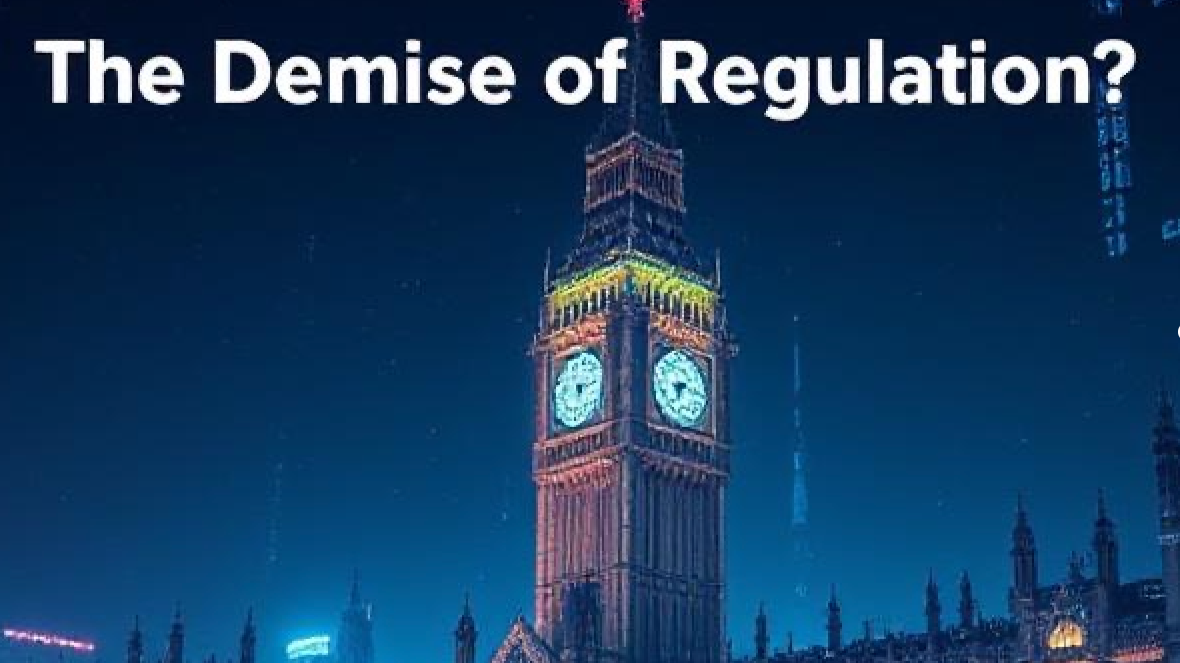

An OVID Health article by David Talbot
The Government is clearly committed to creating a more agile, proportionate and innovation-friendly regulatory system for the UK health and life sciences sector, but at what risk?
When Labour sent a missive to leading regulators last Christmas, across a vast array of sectors, asking for them to come up with ideas to “boost economic growth” it was viewed (by some) as an odd request.
The drive for ever efficient regulation is not a new phenomenon, and the gauntlet thrown down to regulators and watchdogs was in the aftermath of the near ubiquitous pledge from Labour of a “bonfire of red tape” that almost every government has uttered at some time or other.
The debate around ‘regulation’, though, has too often been binary and reductivist; too much regulation is inherently ‘bad’ and “blocks investment” as Labour’s letter over the festive period said. Whilst too little is seen as ‘deregulation’ with all the wrongs that ushered in the financial crisis coming to the fore. And then, of course, there is Brexit – where “every closer regulatory alignment” with the EU is still the gold standard for vast swathes of industry.
Some sectors, like fintech, for example, actively welcomed greater progressive regulation as it emerged in the early 2010s and now the UK is second only to Singapore in terms of fintech investment.
It is a complex, and charged, debate but one that Labour has tackled head on. Two of the regulators that Labour wrote to only 8 months ago no longer exist; Ofwat, for instance, will be disbanded and a new, overarching, regulator will subsume 4 other bodies’ responsibilities in the forthcoming Water Reform Bill later this year.
The headline regulatory announcement this year has, of course, been the disbandment of NHS England. Labelled the “world’s largest quango” in the accompanying government press release, the framing was very much of ‘reducing complex bureaucracy’ and the Prime Minister himself cited the NHS as an example of “over-regulation”.
Indeed, there are 150 bodies that exert regulatory control or influence on the NHS in England alone. One of The Rt. Hon. Wes Streeting MP first skirmishes last summer was with the CQC, which he labelled as “not fit for purpose” after the interim report last summer from NHS England Chair, Penny Dash. The final report, published last month, identified “serious failings” and wholescale reform of the adult social care regulator.
NHS: a “regulatory tsunami”
The plethora of recent policies and plans has also made clear the government’s thinking; the 10 Year Plan, for instance, stated that the “NHS is facing a regulatory tsunami that is overwhelming the system” and, as part of Dash’s review, 4 other health bodies will be disbanded. The Plan also recommended closer collaboration between NICE – National Institute for Health and Care Excellence and Medicines and Healthcare products Regulatory Agency; concurrent marketing authorisation and regulatory approvals to speed up access and reimbursement, and a joint Scientific Advice service to provide one portal for industry seeking expert regulatory advice.
One of the New Labour grandee’s brought into DHSC has gone further; Alan Milburn has told the The Health Foundation‘s latest podcast that the era of “command and control” over the NHS is over. In its stead, through the 10 Year Plan, Milburn is clearly arguing that the health service of the future will be given far more autonomy on a local scale and that the NHS, rather than being seen and treated as one entity, is an “entire eco-system”.
Lastly, two of the leading regulatory figures in health & life sciences are soon to depart the landscape; Samantha Roberts is moving on from NICE, and Rosalind Campion is departing the Office for Life Sciences. In addition, Lawrence Tallon, who has brought energy, engagement, and renewal to a once troubled regulator, only started at the MHRA in April – meaning that 3 key regulatory life sciences heads are new or departing in 2025.
With the rise and potential of AI to support and transform healthcare will come further questions on effective regulation. The Government has already committed that it will bring forward AI regulation in 2026. In the future, rather than having to write to regulators, we may just be able to ask AI.
Article originally published on LinkedIn on 7th August





